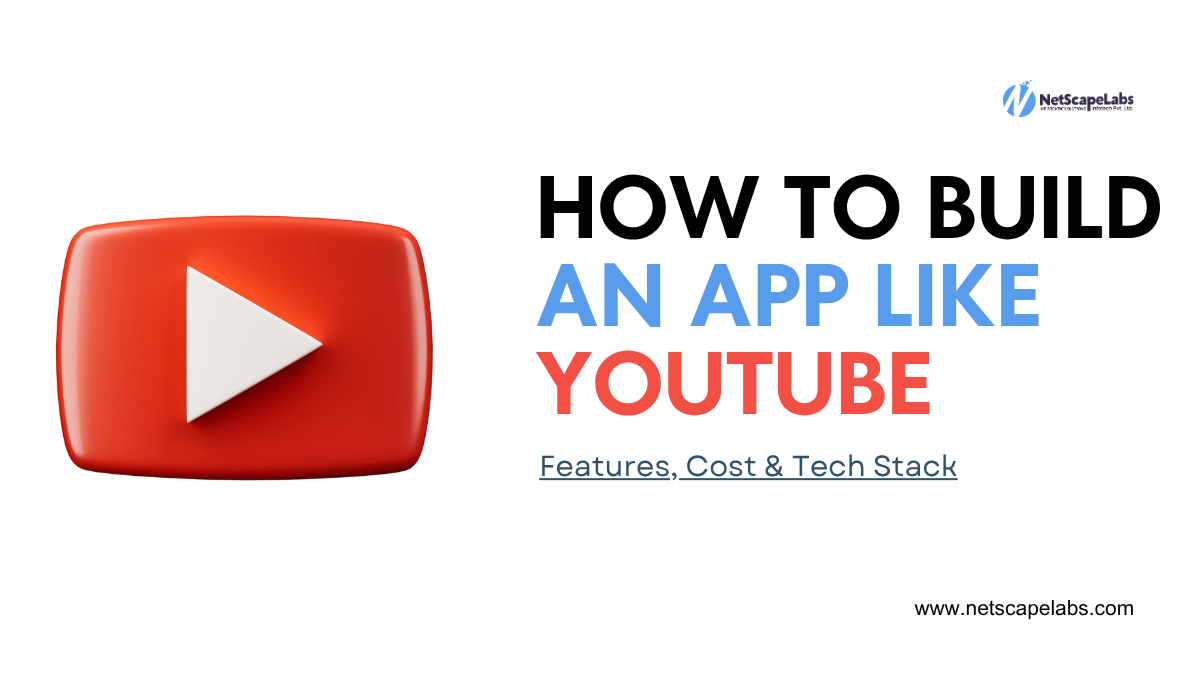Video is no longer just content; it is what millions of people use every day to discover, learn, and socialize. Hence, building an application like YouTube continues to be compelling for founders and brands. After all, why assign an arbitrary platform for uploading videos when one can build their own and truly engage with the audience?
At Netscape Labs, these questions arise quite often among our clients: not leeching YouTube but creating an appropriate video platform catering to their users and market. It seems more doable when broken down into the right strategy, features, and technology.
Let’s explore what it takes to build something like a YouTube app in 2025, from must-have features to the tech stack and associated costs.
What makes an app like YouTube truly work?
When people think about app-like YouTube development, they often picture the visible parts: playlists, uploads, and watch later. But the real engine sits behind the scenes:
- Adaptive video streaming so content plays smoothly across devices and networks.
- Personalised recommendations to keep users engaged for longer.
- Community and socialization mean support for comments, likes, and subscriptions-evoking loyalty from the viewer base.
- Finding channels to monetise services for video makers and the platform.
The factors that separate successful video platforms are not merely technological; the ones that create good products favor a balance between the creators’ needs and the expectations of the viewers.
The core features your platform should include
To make an app like YouTube development in India or anywhere else, you should include these in your MVP:
- Seamless video upload and playback
- Search and discover section, with trending and recommended content
- User profiles, with playlists and subscriptions
- Push notifications for new uploads or live streams
- Analytics dashboards for creators to track engagement
- Moderation tools to manage content and comments
From there, you might layer on advanced features: live streaming, offline downloads, AI-powered content moderation, or premium subscription tiers.
Choosing the right tech stack
Often, the tech stack makes or breaks an important project. Typically, these tech recommendations include an app like YouTube:
- Frontend (mobile and web): Flutter or React Native for apps, React.js for the web
- Backend: Node.js or Python (Django, FastAPI) to provide APIs and handle logic
- Video storage and processing: Cloud providers like AWS, Google, or Azure
- Streaming: HLS (HTTP Live Streaming) to be transparent about the bandwidth for quality adjustment
- CDNs: To assist in the fast loading of videos worldwide
- Database: MongoDB or PostgreSQL for user-related and video metadata information
- AI Services: For recommendation, automatic subtitling, or moderation purposes.
Choose things that will scale, are secure, and fit your budget.
Cost to build an app like YouTube
Most people want a cookie-cutter number. Unfortunately, the answer varies according to scope, platforms (i.e., iOS, Android, web), and most-wanted features.
As a guide:
- A basic MVP (upload, view, search, profiles): roughly $40,000–$70,000
- A feature-rich platform (live streaming, recommendations, monetisation tools): typically $100,000+
These figures include design, development, testing, and deployment, but not ongoing cloud hosting, updates, or marketing. Keep in mind: launching is step one; scaling and improving over time is just as important.
Why brands still build their video platforms
You might wonder: why not just use YouTube or other OTT platforms? Control is the main answer. With your platform, you decide:
- The business model (ads, subscriptions, sponsorship)
- The user experience and brand design
- What content is promoted or restricted
- How data is collected and analysed
For many businesses, that ownership makes the investment worthwhile.
How Netscape Labs approaches projects like this
Bringing the forces of strategy, design, and engineering together, we ensure that its clients never stop at creating features but rather go on to build products into love with their users.
- First, defining the target audience and product vision from scratch
- An MVP is then scoping that meets timeline and budget constraints
- Pick the tech stack that feels right to you
- Interface design that is an interplay of smooth video workflows will correspond to your intuition.
- Testing covers every device and network.
Post-launch involvement throughout everything means adding features, tweaking UX, and making sure tech aligns as user habits evolve.
Final thoughts
Building an app like YouTube isn’t about copying what’s already out there; it’s about truly knowing the users, setting up subtle factors that make the platform unique, and generating an app that fills the need.
With the right approach and development partner, it is possible. If you’re looking into your video platform idea, Netscape Labs is here to guide you through turning that vision into something real, scalable, and accommodating.
FAQs
How long is the MVP Production Time?
Roughly 4-6 months, depending on the complexity and platforms.
Can small teams launch video platforms?
Yes, especially if they start with a focused MVP and scale later.
What about moderation and security?
We use AI tools, user reporting, and manual checks to keep platforms safe.
Do you only build for India?
No, we work with clients in India, the USA, the Middle East, and beyond.
How do creators earn revenue?
Creators earn revenue through ads, subscriptions, sponsorships, or premium content.

